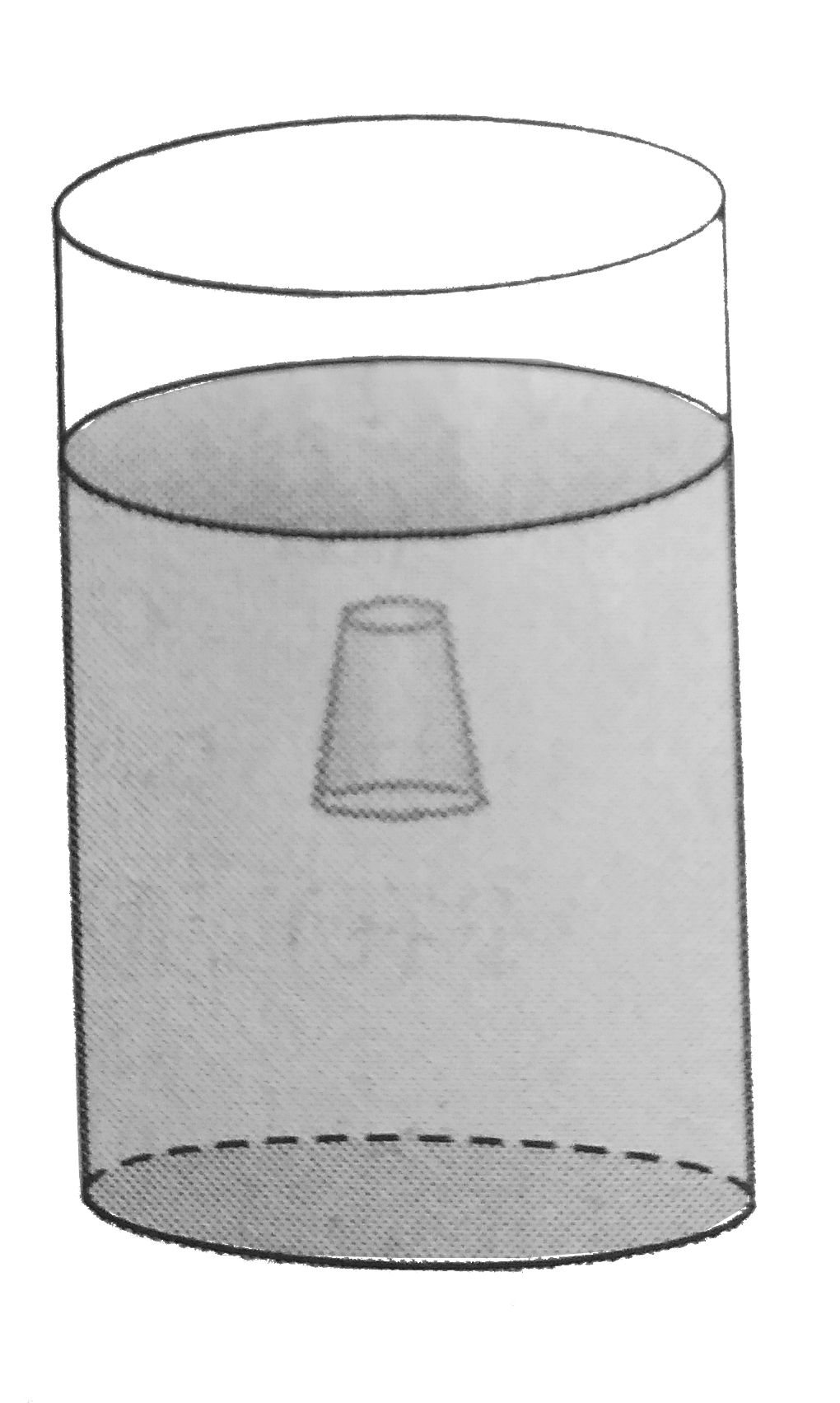Air is a fluid and our bodies displace air. And so a buoyant force is acting on each of us. Estimate the magnitude of the buoyant force on a 75 kg person due to air displaces. Is the actual weght of the person more or less than the scale reading?
Volume of person,
Buoyant force,
(as estimated density of person, ,density of air, )
The weight of the person is more than the scale reading.
Topper's Solved these Questions
- BOOK - PRADEEPCHAPTER - FLOTATIONEXERCISE - Oral Testing21videos
FLOTATION
- BOOK - PRADEEPCHAPTER - FLOTATIONEXERCISE - Quiz Testing:Between Two Groups9videos
FLOTATION
- BOOK - PRADEEPCHAPTER - FLOTATIONEXERCISE - PROBLEMS FOR PRACTICE18videos
FLOTATION
- BOOK - PRADEEPCHAPTER - FORCES AND LAWS OF MOTIONEXERCISE - MOCK TEST36videos
FORCES AND LAWS OF MOTION
Similar Questions
Air is a fluid and our bodies displace air. As a result of this, a buoyant force is acting on each one of us.
What is the approximate density of your body?View SolutionA balloon displaces in air, resulting in buoyant force. This buoyant force is more than the weight of the balloon and hence the balloon moves up.
Buoyant force is directly proportional to the density ofView Solution
Knowledge Check
- Question 1 - Select One
Two balls of same size but different masses m1 and m2(m2>m1) are attached to the two ends of a thin light thread and dropped from a certain height. It is known that the ciscous drag of air depends on the size and velocities of the balls. other than the gravitational pull from the earth and the viscous drag, the buoyant force from air also act on the balls, the buoyant force on a ball equals to the wweight of air displaced by the ball. After sufficiently long time from the instant the balls were dropped both of them acquire uniform velocity known as terminal velocity. When the balls have acquired terminal velocity, the tension in the thread is
AzeroB(m2−m1)gC0.5(m2+m1)gD0.5(m2−m1)g - Question 2 - Select One
A balloon displaces in air, resulting in buoyant force. This buoyant force is more than the weight of the balloon and hence the balloon moves up.
As the balloon moves up, the density of airAIncreasesBDecreasesCremains sameDnone of these - Question 3 - Select One
Statement I: Imagine holding two identical bricks under water. Brick A is completely submerged just below the surface of water, while brick B is at a greater depth. The magnitude of force exerted by the person (on the brick) to hold brick B in place is the same as magnitude of force. exerted by the person (on the brick) to hold brick A in place.
Statement II: The magnitude of buoyant force on a brick completely submerged in water is equal to the magnitude of weight of water it displaced and does not depend on the depth of the brick in water.AStatement I is true, statement II is true and Statement II is a correct explanation for Statement I.BStatement I is true, Statement II is true and Statement II is NOT the correct explanation for Statement I.CStatement I is true, Statement II is false.DStatement I is false, Statement II is true.
A balloon displaces in air, resulting in buoyant force. This buoyant force is more than the weight of the balloon and hence the balloon moves up.
Which of the following is the condition for floating of balloon ?View SolutionA 1900-kg car experiences a combined force of air resistance and friction that has the same magnitude whether the car goes up or down a hill at 27 m/s. Going up a hill, the car's engine needs to produce 47 hp more power to sustain the constant velocity than it does going down the same hill. At what angle is the hill inclined above the horizontal ?
View SolutionAn empty glass jar is submerged in tank of water with open mouth of the jar downwards, so that air inside the jar is trapped and cannot get out. As the jar is pushed down slowly, the magnitude of net buoyant force on the system of volume of gas trapped in the jar and the jar.
 View Solution
View SolutionThe vertical surface of a reservoir dam that is in contact with the water is 120 m wide and 12 m high . The air pressure is one atmosphere . Find the magnitude of the total force acting on this surface in a completely filled reservoir . (The pressure varies linearly with depth , so , you must use an average pressure)
View SolutionOne way of measuring a person's body fat content is by "weighing" them under water. This works because fat tends to floats on water as it is less dense than water. On the other hand muscle and bone tend to sink as they are more dense. Knowing your 'weight' under water as well as your real weight out of water, the percentage of your body's volume that is made up of fat cab easily be estimated, fat (low density) and everything else (high density). The "weight" measured by spring balance both inside and outside the water. Quotes are placed around weight to indicate that the measurement read on the scales is not your true weight, i.e. the force applied to your body by gravity, but a mersurement of the net downward force on the scale.
In the above question if the spring is cut, the accleration of the person just after cutting the spring isView Solution

